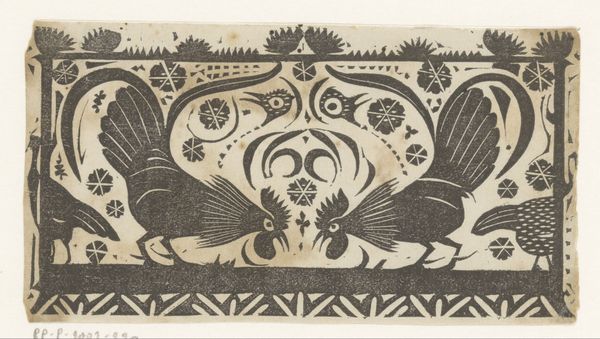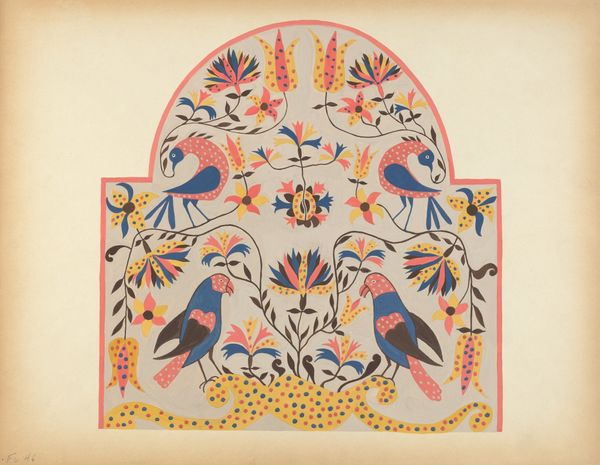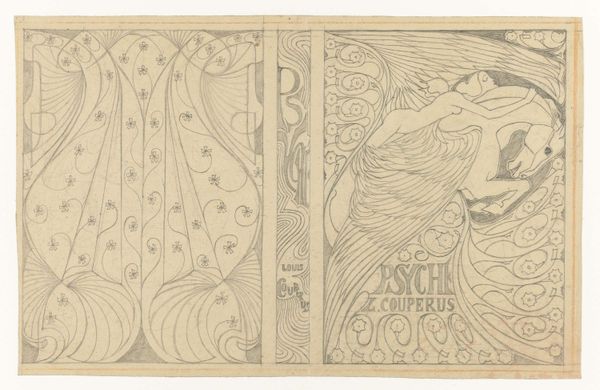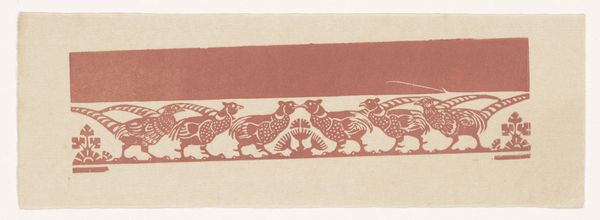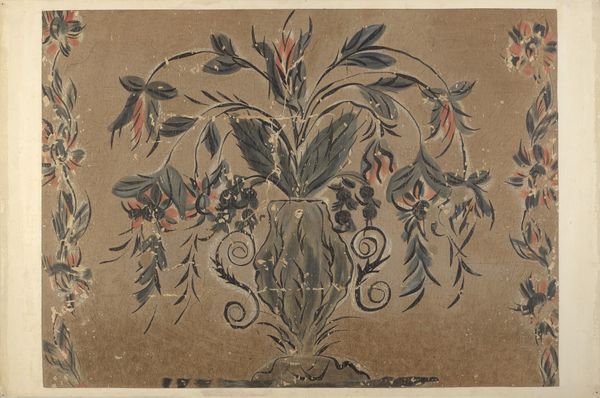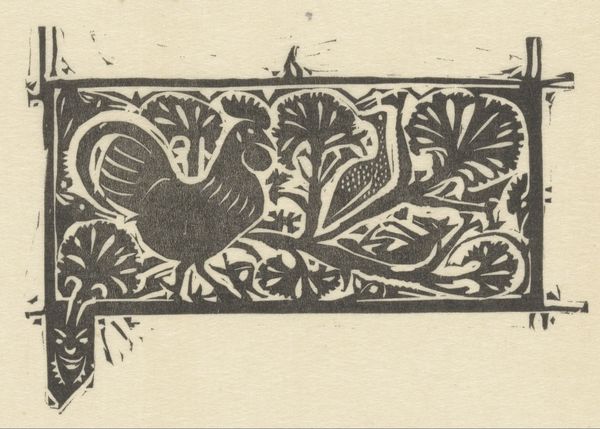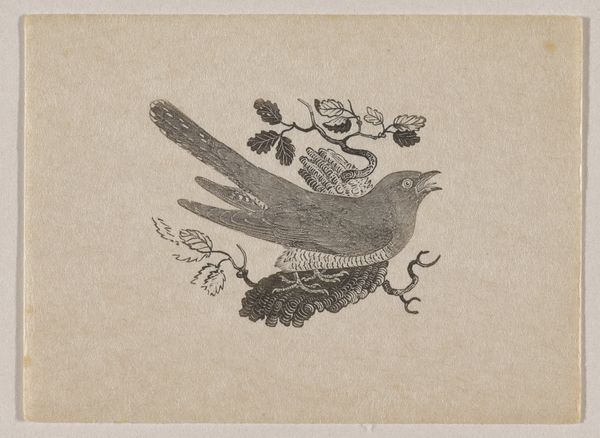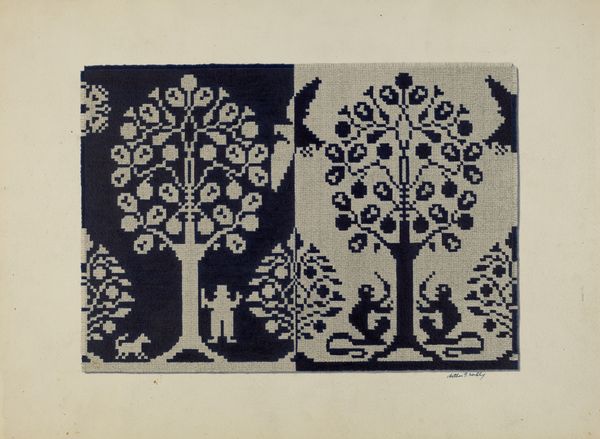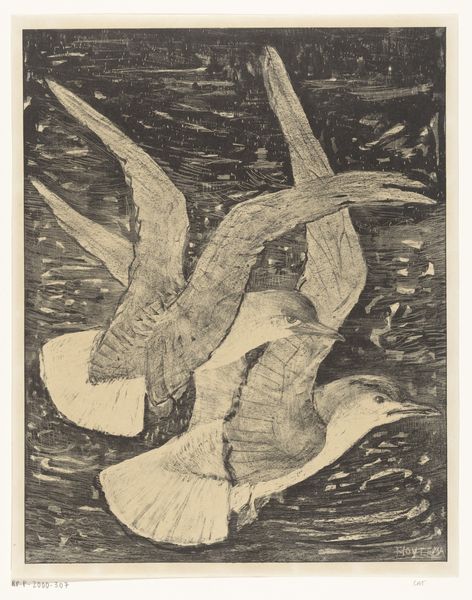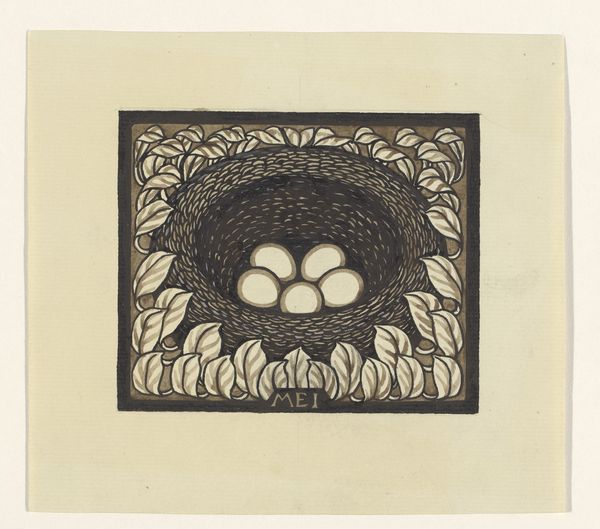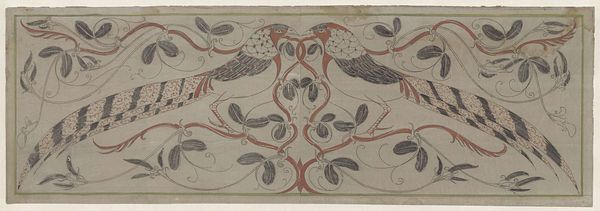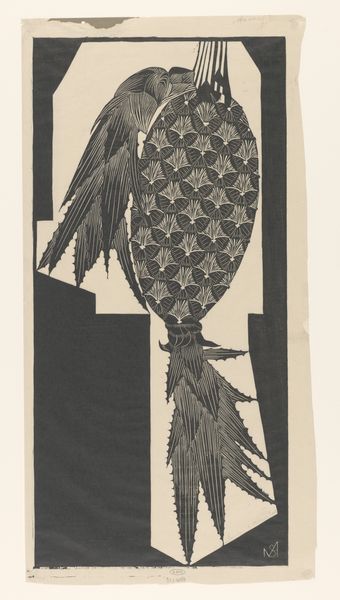
drawing, print, linocut
#
portrait
#
drawing
#
art-nouveau
# print
#
linocut
#
linocut print
#
geometric
#
symbolism
Dimensions: height 475 mm, width 666 mm
Copyright: Rijks Museum: Open Domain
Curator: Let’s turn our attention to "Twee wespendieven," or "Two Honey Buzzards," a striking linocut print created in 1918 by Samuel Jessurun de Mesquita. The work resides here at the Rijksmuseum. Editor: Immediately, I'm struck by the geometric precision. The stark contrast of black and white creates an almost unsettling stillness, a tension that feels quite modern for a piece from the late 1910s. Curator: Mesquita, a significant figure in Dutch Art Nouveau and Symbolism, was deeply interested in the formal possibilities of printmaking. Notice the repetition, the mirroring of the two birds creating a balanced composition. The artist used shape, particularly the square and chevron patterns of the wings, to render the subjects recognizable while bordering abstraction. Editor: But this stylization doesn’t exist in a vacuum. We have to consider Mesquita's identity. He was a Sephardic Jew, and later murdered in Auschwitz. The visual language could easily serve to express ideas around the fragility of identity during a turbulent and dangerous period in European history. The very symmetry hints at a kind of precarious balance about to be broken. Curator: That reading has merit; however, consider the art historical precedent— Japanese prints, for example. The simplification of form and the bold use of black and white could just as easily point to a formal fascination rather than an overt political statement. Mesquita also taught M.C. Escher, which illuminates how fundamental formal rigor was to his artistic project. Editor: Yes, the formal elements are undeniably compelling, but reducing the work to that alone ignores its potential for deeper resonance. Are the birds idealized, endangered, or merely observed? Given his personal history, how could it not be read through the lens of persecution? Curator: The stark composition itself elevates the subject, inviting such speculation; an interplay that seems at the very core of modern aesthetics. Editor: Absolutely. Ultimately, its beauty lies in its multi-layered nature, one both anchored to, and exceeding its historical moment. Curator: Indeed, its formal structure provides a scaffolding, while allowing interpretation. Editor: Making the encounter with this particular artwork something entirely new, and personal for each one of us.
Comments
No comments
Be the first to comment and join the conversation on the ultimate creative platform.
